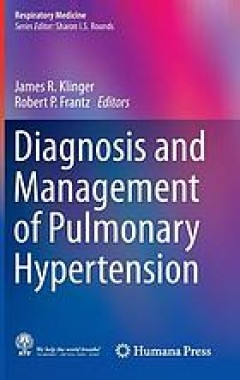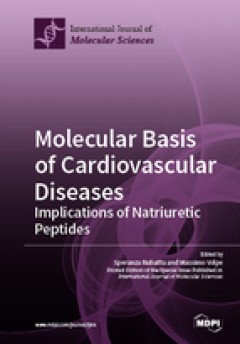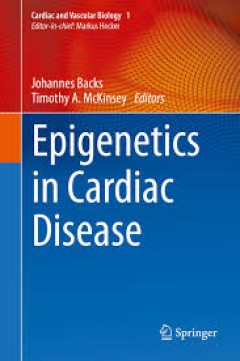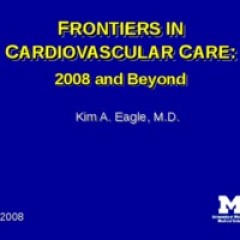Filter by

Diagnosis and Management of Pulmonary Hypertension
This book provides an overview of pulmonary hypertensive diseases, the current understanding of their pathobiology, and a contemporary approach to diagnosis and treatment. It discusses the definition and classification of these disorders and the epidemiology of pulmonary arterial hypertension (PAH); explores the approach to diagnosis and evaluation via methods such as echocardiography, right he…
- Edition
- -
- ISBN/ISSN
- 9781493926367
- Collation
- -
- Series Title
- -
- Call Number
- 616.1025

Molecular Basis of Cardiovascular Diseases : Implications of Natriuretic Pept…
The natriuretic peptides (NPs) family includes a class of hormones and their receptors needed for the physiological control of cardiovascular functions. The discovery of NPs provided a fundamental contribution into our understanding of the physiological regulation of blood pressure, and of heart and kidney functions. NPs have also been implicated in the pathogenesis of several cardiovascular di…
- Edition
- -
- ISBN/ISSN
- 978-3-03921-583-6
- Collation
- -
- Series Title
- -
- Call Number
- 616 MOL

Magnesium Intake and Human Health
Magnesium is universally recognized as an essential nutrient for human life and health. Indeed, magnesium plays an important physiologic role in every organ of the human body. Disturbances of Mg homeostasis have been implicated in the pathophysiology of several diseases, and Mg supplementation has been evaluated in numerous large-scale clinical trials. The World Health Organization has listed m…
- Edition
- -
- ISBN/ISSN
- 978-3-03897-335-5
- Collation
- -
- Series Title
- -
- Call Number
- 616 MAG

Dual-energy CT in cardiovascular imaging
This book focuses on the rapidly developing and promising novel applications of Dual Energy CT (DECT) in cardiovascular medicine. Although developed many years ago, DECT represents the newest significant advancement in the field of computed tomography, the clinical utility of which has recently expanded as many new applications have been developed. In the field of cardiovascular medicine, DECT …
- Edition
- -
- ISBN/ISSN
- 9783319212272
- Collation
- -
- Series Title
- -
- Call Number
- 616.120754

Edge-to-edge mitral repair : from a surgical to a percutaneous approach
This is the first comprehensive review of the edge-to-edge technique for mitral repair, which was introduced into the surgical armamentarium in 1991 by one of the authors, Ottavio Alfieri. The surgical technique employed in edge-to-edge repair today provides the basis for the only reliable method of percutaneous correction of degenerative mitral regurgitation. The book traces the evolution of t…
- Edition
- -
- ISBN/ISSN
- -
- Collation
- viii, 166 pages
- Series Title
- -
- Call Number
- 611.0185

Epigenetics in Cardiac Disease
This book describes important advances in our understanding of how environmental conditions affect cardiac gene expression through epigenetic mechanisms. Further, it discusses the roles of chromatin modifications (in particular DNA methylation and histone modifications) and of chromatin regulators in the context of cardiac diseases. The book provides readers with an overview of our current unde…
- Edition
- -
- ISBN/ISSN
- 978-3-319-41457-7
- Collation
- 10 b/w illustrations, 24 illustrations in colour
- Series Title
- -
- Call Number
- -

Frontiers in Cardiovascular Care
This sequence provides a comprehensive introduction to diseases of the cardiovascular system, how they present, how they are diagnosed, how they are prevented, and how they are treated. Students learn to identify the integral links between anatomy, physiology, pathology, and basic sciences with clinical medicine and other essential aspects of patient care for ambulatory and hospitalized patient…
- Edition
- -
- ISBN/ISSN
- -
- Collation
- -
- Series Title
- -
- Call Number
- 610
 Computer Science, Information & General Works
Computer Science, Information & General Works  Philosophy & Psychology
Philosophy & Psychology  Religion
Religion  Social Sciences
Social Sciences  Language
Language  Pure Science
Pure Science  Applied Sciences
Applied Sciences  Art & Recreation
Art & Recreation  Literature
Literature  History & Geography
History & Geography